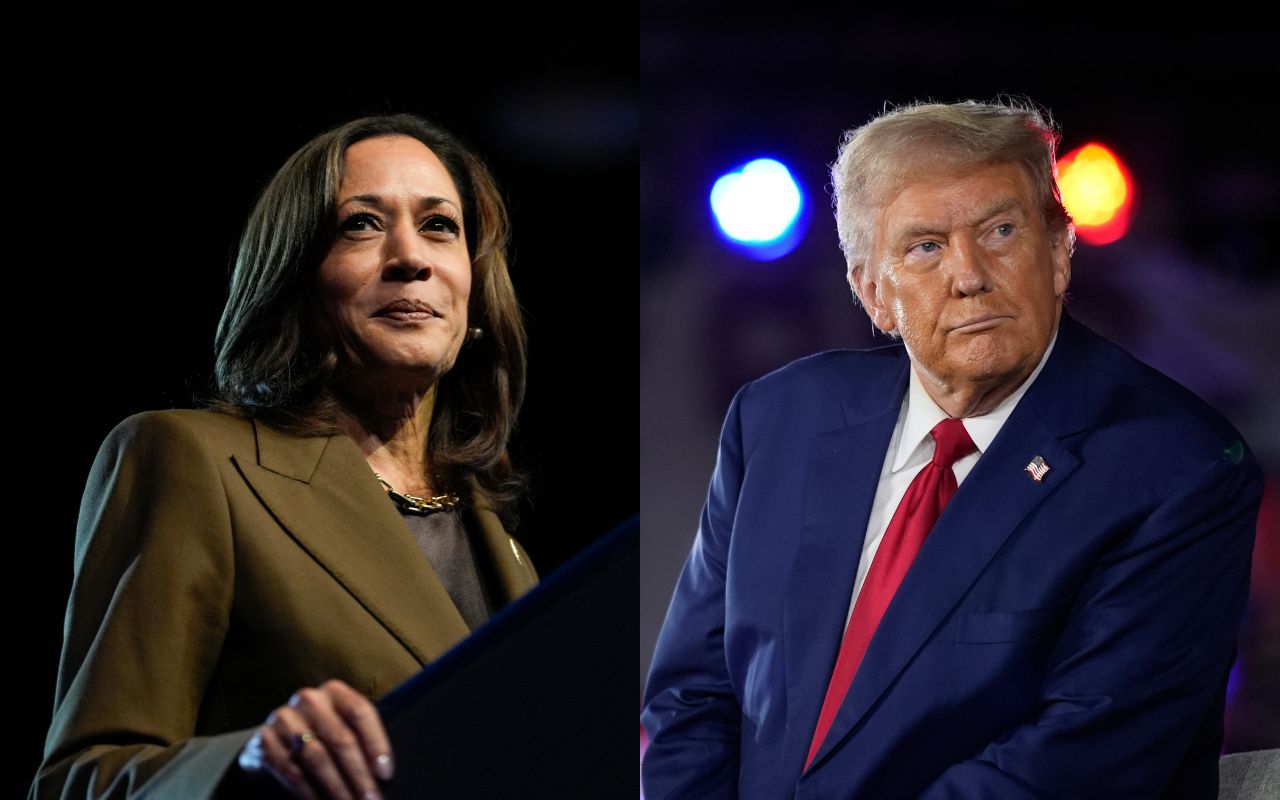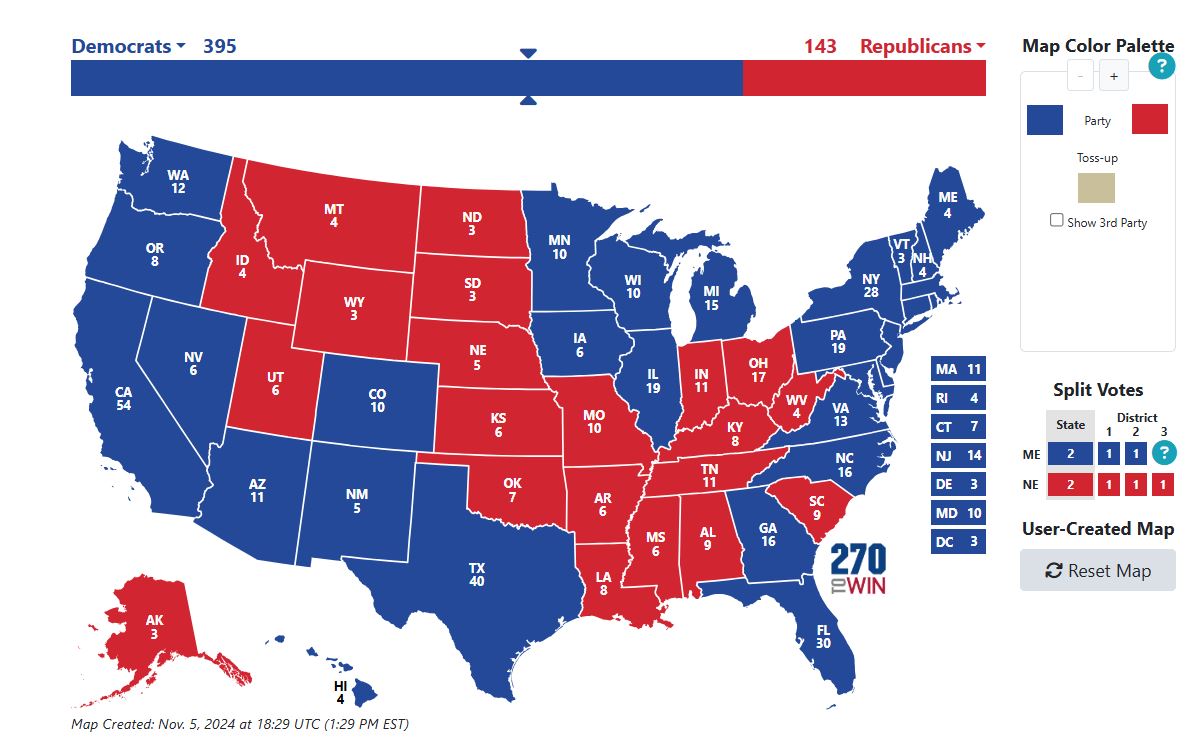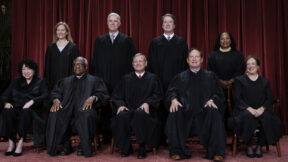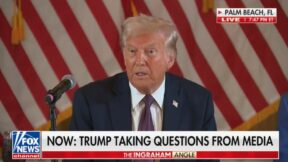
AP Photo/Carolyn Kaster; AP Photo/Alex Brandon
Arguably the most fun part about Election Day — besides the drinking and schadenfreude — is watching as your own predictions come to pass and your enemies’ turn to ashes in their mouths.
With that in mind, Mediaite’s Tommy Christopher and Isaac Schorr have two very different expectations going into Tuesday night. And while much of the commentariat is insistent that this will be one of the closest elections in American history, these two suspect otherwise.
So without further ado, here are their maps and explanations for them.
TOMMY CHRISTOPHER’S BLUE WAVE

If Christopher’s vision comes to pass, Kamala Harris will not just have blown out Donald Trump, but completely changed the political landscape of the United States. He foresees Harris not only sweeping the seven key swing states that most observers are paying attention to, but flipping Iowa, Texas, and Florida.
While Iowa and Florida has long been thought of as a swing state, both have moved decidedly to the right in recent years. And as for Texas, it hasn’t gone blue since 1976.
At the heart of this audacious prediction is Christopher’s feeling that the historic nature of Harris’s candidacy will propel her to heights that most pundits are missing.
“One of the big problems with the media is that it is so male dominated and white male dominated. And so they don’t see things from any other perspective,” said Christopher in September. “They vastly, vastly underestimate the energy around a historic candidacy for women and particularly for Black women. And I think that there is going to be a huge shock on Election Day regarding those facets, because it’s not just, you know, women and black women who are going to turn out to support Kamala Harris. I mean, and it’s not just because of the historic candidacy, you know, but that is a thing that is going to grab people and get them out of the house and say, ‘You know what? I want to be a part of that.'”
Christopher added the following to his argument:
Obviously, my map is a little bit on the optimistic side, but what I do think is that this will be a landslide for one of these two candidates, and I believe it will be VP Harris.
I think it will come down to is the so-called hidden vote. Who has the most hidden votes, and which hidden vote segment or segments are larger?
On the Trump side, there will be what the media calls the shy Trump vote, but which I call the ashamed-to-say-out-loud Trump vote, and I think the wildcard here is how many men peel off at the last second because they just can’t vote for a woman, a Black woman, or an Asian woman. I could be vastly underestimating the size of this contingent.
But on the Harris side, I think that people are missing the intersection of several different hidden votes. I think the media vastly underestimates the energy around the historic nature of her candidacy. That energy will drive people who previously did not vote.There is also the not so hidden abortion vote, which I also believe is being vastly underestimated. The size of this vote, which I believe will include many more men than is currently understood, is being greatly underestimated.
That group intersects with the third hidden vote, the so-called Nikki Haley voters who are really just Republicans, who were looking for anybody who isn’t an adjudicated rapist to vote for. I don’t think this contingent is as large as the other two but I also think it is sizable and , when you put all three together, I think it adds up to a Harris landslide.
ISAAC SCHORR’S TRUMP TRIUMPH

On the other hand, Schorr anticipates Trump running the table in the swing states, even if he won’t ultimately be able to pick off any of his reach targets, like Virginia, New Mexico, and New Hampshire.
There are three principal reasons for his bullishness on Trump.
First, Donald Trump has run for president twice, and in both instances, the polls have always massively underestimated him. In 2020, surveys suggested Joe Biden was beating him by 7.9% in Michigan and 8.4% in Wisconsin. but when all of the ballots were counted, Biden had only bested him by .6% in each. This time, the polls indicate that every single battleground state is a toss-up, so an error even a fraction as egregious as last time around would mean that Trump would prevail in every single one of them. Some see the tighter polls this time around as a sign that those conducting them have finally found a way to account for “shy” Trump voters. But as The New York Times‘ Nate Cohn acknowledged over the weekend:
It’s hard to measure nonresponse bias — after all, we couldn’t reach these demographically similar voters — but one measure I track from time to time is the proportion of Democrats or Republicans who respond to a survey, after considering other factors.
Across these final polls, white Democrats were 16 percent likelier to respond than white Republicans. That’s a larger disparity than our earlier polls this year, and it’s not much better than our final polls in 2020 — even with the pandemic over. It raises the possibility that the polls could underestimate Mr. Trump yet again
Second, the fundamentals are on his side in a way that they never have been before. Americans are deeply dissatisfied with both the economy and the incumbent president — and it’s his vice president representing the Democrats as their standard bearer. Last time, Trump’s apparent mismanagement of the pandemic was front of mind. Now skyrocketing prices, wars abroad, and the border crisis are. So while Trump represented an unpopular status quo in 2020, he’s back to being the alternative to one this year.
And last but not least, this Trump campaign has learned from at least some of its forerunners’ most critical mistakes. For example, while his 2020 team discouraged supporters from voting early or via the mail, this time they’ve done the opposite, even managing to run up the score on the Democrats in key states like Nevada.
Add it all together and it’s not hard to see how Trump might not just on his way to a victory, but the most decisive one of his political career.
This is an opinion piece. The views expressed in this article are those of just the author.






